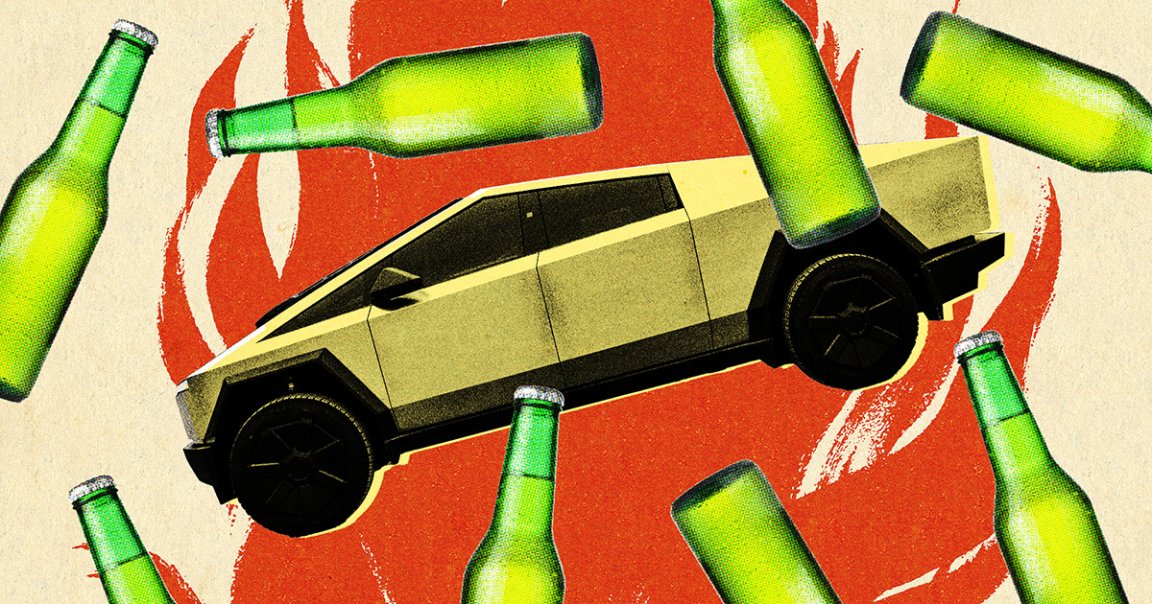
The New Accelerator
Just after 3 a.m. on November 29, 2024, a Cybertruck carrying four recent high schools grads careened off the highway and crashed into a tree in Piedmont, California.
The vehicle caught fire, filling the cabin with smoke. Three of the teens died from asphyxiation, while another escaped with severe burns thanks to the help of a bystander.
It’s the deadliest incident to occur in a Cybertruck so far, and a new toxicology report might help explain why: both the driver and passengers had unusually high levels of alcohol and cocaine in their blood.
Before anyone writes this off as an unfortunate-if-simple drunk driving accident, there are several factors to keep in mind.
First, consider the fact that less than half a percent of vehicles catch fire in a given year. That’s an extremely low number in the grand scheme of things, thankfully, but makes it all the more tragic when one does break out. When it comes to Cybertrucks, however, the numbers ought to be even lower, given that the vehicles run on Tesla’s proprietary brand of lithium-ion batteries, rather than combustible gasoline.
Yet that’s not the case. Including these three in California, there have been five fire-related fatalities reported to involve Cybertrucks since they hit the roads in November of 2023. Accounting for units sold, a recent analysis pointed out, that appears to make them 17 times more deadly than the infamous Ford Pinto, which gained notoriety during the 1970s for a gas tank that would explode if nudged too hard. Remember also that Tesla has issued six factory recalls in the Cybertruck’s short life span — the latest of which was a “cell denting” electrical issue detected in “many inventory vehicles,” according to reporting.
In the case of the Piedmont crash, the exact cause of the fire is yet unknown, but that there was a blaze at all in an electric vehicle ought to raise some eyebrows. After all, weren’t EVs once said to be much safer than their gas-guzzling counterparts? But the reality — at least for Tesla’s EVs — hasn’t been so sunny.
As of 2023, Tesla’s vehicles had resulted in 232 fires and 83 fire-related deaths. Relative insurance claim frequencies for Model S and X fires not due to collisions are the highest of all luxury sedans and SUVs, according to a two-year study by the Highway Loss Data Institute. Compared to other luxury vehicles, it’s no contest for Tesla; compare 725 relative losses to the car with the second-highest relative claims, Land Rover, which clocked a paltry 132. With that in mind, it’s no wonder that issues with Tesla’s in-house batteries have been attributed to higher-than-average fire fatalities as far back as 2013.
But let’s assume the cause of the fire was external — we still don’t know, after all. And that leaves us with Tesla’s notorious doors.
Though all of Tesla’s EVs have suffered complaints and issues relating to their futuristic door latches, the Cybertruck’s might be the most horrifying. While at least two rounds of Cybertruck prototypes contained bulky, physical latches, the consumer models opted instead for a discreet, electronic door opener which blends into the side of the door, both on the inside and out. That might make them look sleek, but the issue comes when the truck’s low-voltage system fails and the electronic door opener no longer works — a problem which, along with the truck’s “bullet-proof windows,” has greatly concerned first responders.
When the power goes out, the three-ton vehicle’s doors have to be opened manually, as explained by the owner’s manual: “In the unlikely event that Cybertruck has no low voltage power,” it reads, “you will not be able to open the doors from the interior by pressing the interior door open buttons. Instead, use the manual door releases.”
The driver’s side manual door release is relatively simple, though it blends in with the black door trim. The rear manual release, however, involves peeling two plastic panels away and yanking on a small plastic cord — a decidedly difficult task if you’re drunk and panicking as the truck’s cabin fills with smoke.
It’s a given that car crashes are notoriously disorienting incidents. But in the case of Piedmont crash, the fact that one passenger was able to escape alive indicates that the impact alone was not enough to knock the riders out completely — yet another grim indictment for the Cybertruck.
More on Cybertrucks: Terrifying Footage Shows Cybertruck on Self-Driving Mode Swerve Into Oncoming Traffic